Menu
Permanent makeup is like a tattoo. The placement process uses colored ink injected into the second layer of skin (dermis) to create permanent color changes. Permanent makeup can be used to define or line the lips and eyes, darken the eyebrows and even give your cheeks a rosy glow. While it is a tempting way to shave off some grooming time in the morning, consider that it can be permanent!
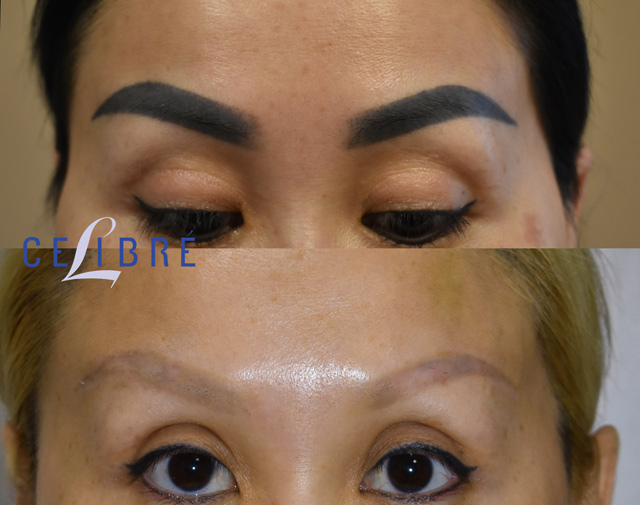


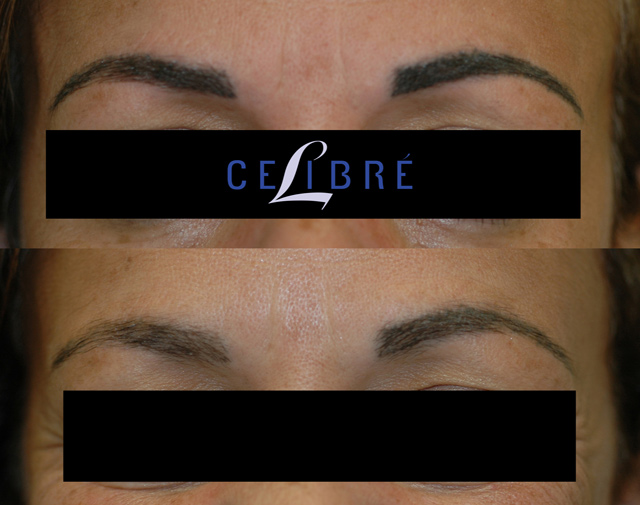
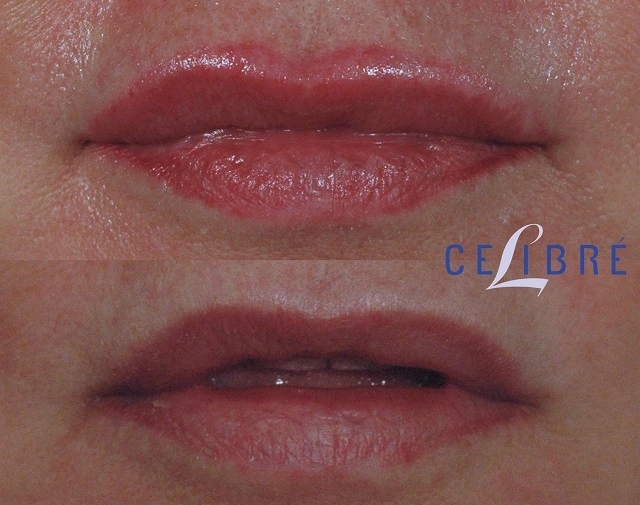
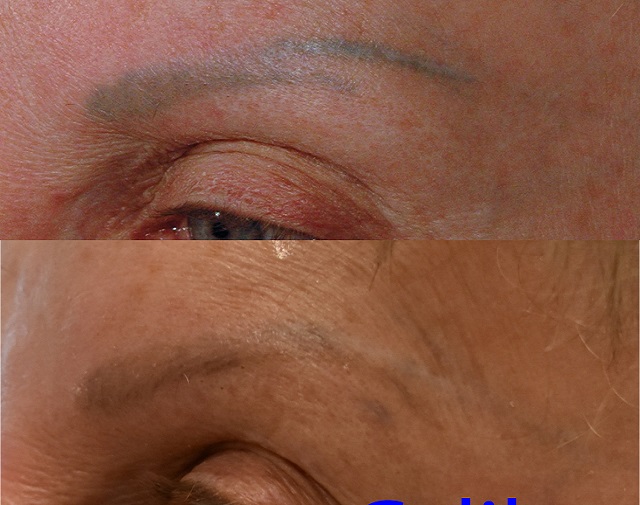
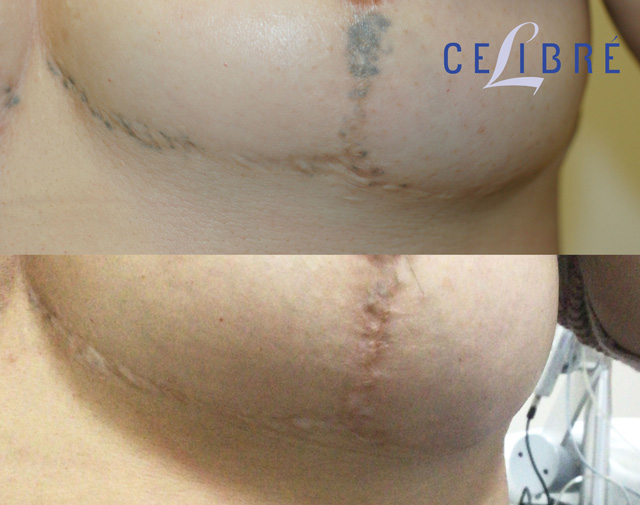

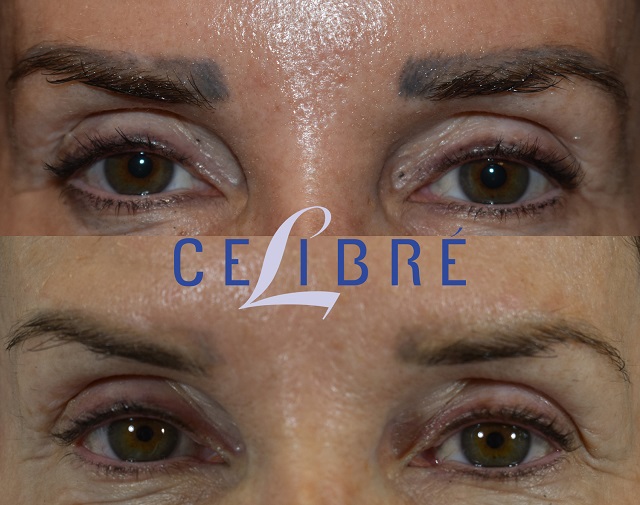
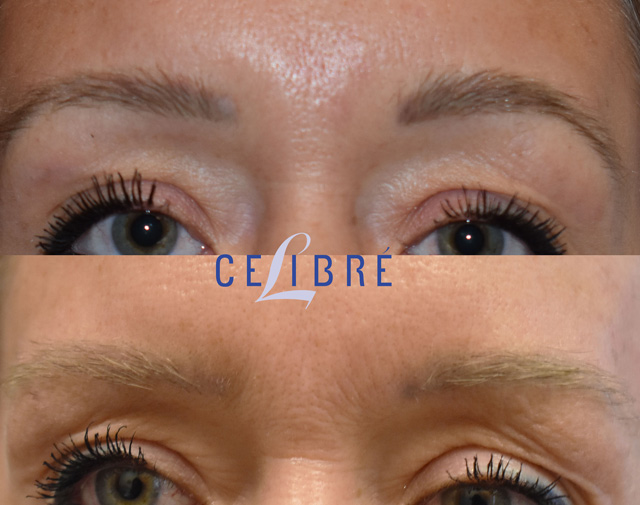
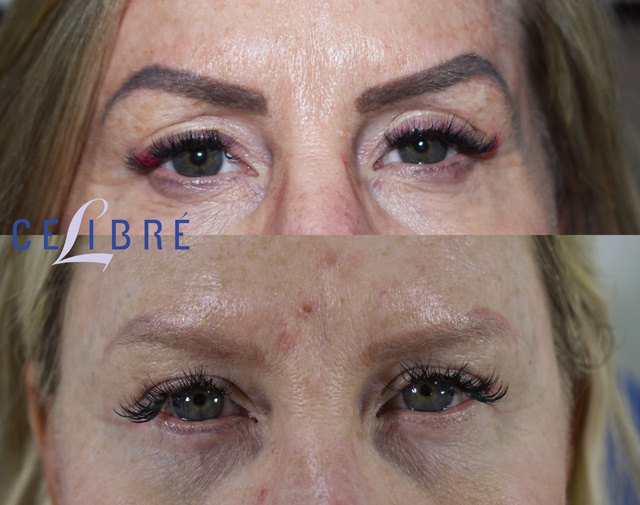

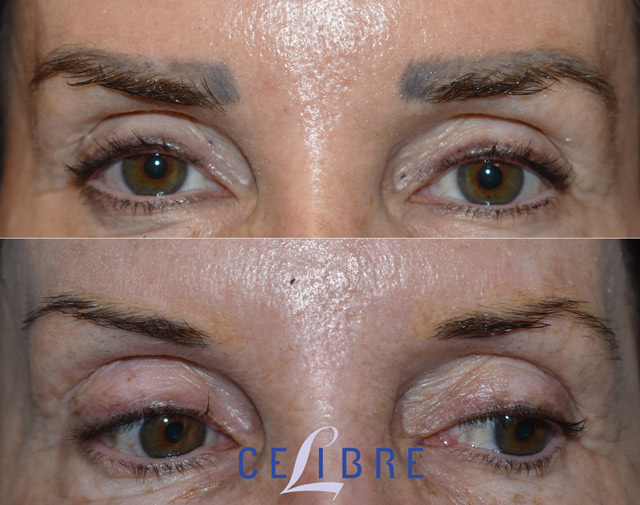
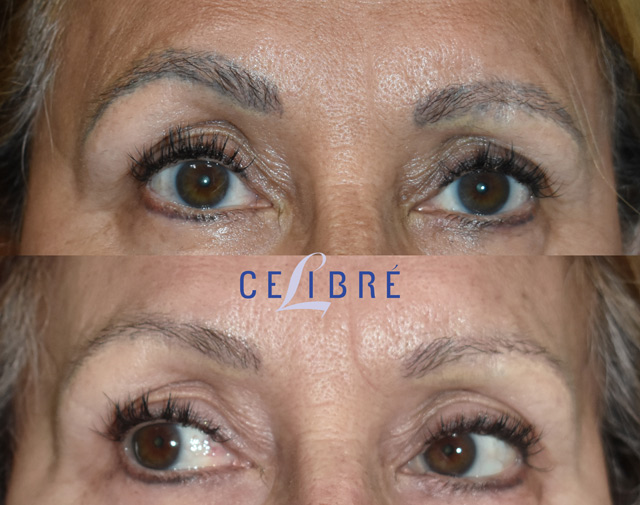
















Not everyone that gets permanent makeup treatments is happy with the result. We treat many patients whose makeup has changed colors, bled over to other areas they did not want it, placed too high on their brows or otherwise just doesn’t look like they envisioned. When this happens, lasers are used to get rid of or fade the permanent makeup enough to go over it.
The process is almost the same for permanent makeup as it is for the removal of tattoos. The laser energy is absorbed by the permanent makeup ink particles, which then break into smaller pieces. Once broken down into smaller particles, the ink can be removed by the body’s immune system. The process of removing these smaller ink particles takes time and we recommend treatments no less than 6-8 weeks apart for best results.
When lasers are used to remove permanent makeup, the high energy from the laser light strikes ink particles and breaks them into small pieces. These small particles are then removed by the immune system over time. Saline treatments involve using needles and saline solutions to manually extract ink particles from the skin. The needle insertions can be traumatic for the skin and sometimes cause scarring – textured or pigment loss. In addition, the number of treatments required with saline solution removal is usually between 10 and 20 and the results are often not complete. What a saline treatment can do in 4 visits, a laser can do in 1 – with a
much lower risk of scarring.
Most people who have their permanent makeup removal with lasers experience redness, swelling and some mild crusting in the treated area. While the duration of this can vary depending on the exact type of laser that’s used and how dark the ink is to start, most patients are fully healed within a few days after treatment.
One very important point about permanent makeup removal is that the ink can “oxidize” during treatment. Think about oxidizing like you would rusting. Rusting is a process that causes metals to turn an orangish or brownish color as they deteriorate. Because permanent makeup ink sometimes contains metal (iron) particles, it too can change color over time or when a laser treatment is done. If you’ve ever seen a woman with orange eyebrows this is an example of an oxidized permanent makeup. If the permanent makeup oxidizes to another color, we suggest our patients use a pencil to cover over the color change during the removal process. The oxidized color can be orange, light grey, or even light blue. Regardless of whether your permanent makeup ink oxidizes, we can still remove it.
As with tattoo removal, q-switched lasers are most commonly used to remove permanent makeup. Multiple visits are required, and the number of visits depends on the quality of the ink, how much was placed, and how deeply it was placed. The better the ink, the deeper the placement and the higher the quality, the more treatments it takes to remove.
Different laser wavelengths may need to be depending on the color of the ink.
The first part of this question relates to how many treatments are required. In our experience, permanent makeup removal typically involves 2-5 laser treatments. There are some instances where more are required but 2-5 is typical. The treatments are spaced about 8 weeks apart. This ensures proper healing of the area after treatment as well as enough time for the body to process (remove) the ink particles. If you have 4 treatments spaced 8 weeks apart, the process would be about 8 months. Some fading of the ink will occur after the last treatment.
Many patients that have permanent eyeliner are told that it cannot be removed. This is not true. Permanent eyeliner CAN be removed if you have the proper equipment. Removing permanent eyeliner requires the eyes to be protected from the laser using stainless steel corneal eye shields. Using these shields, we can safely treat and remove permanent eyeliner. We use a small drop of anesthesia in the eye and then insert the stainless-steel egg-shaped eye covering under the lids so that no laser light can enter the eye.
We remove permanent makeup on all areas of the body. We have treated lips, eyeliner, eyebrows, breasts, areolas, hands, arms and legs. We’ve seen permanent makeup placed on almost all areas of the body and we can successfully remove it from any area.
Permanent makeup removal can be painful, but there are ways to help with pain. The first is numbing cream. When working on the eyebrows, lips or any other area except eyeliner, topical numbing cream can be used to lessen the pain of the removal. For better control of discomfort, we also inject 2% lidocaine, a local anesthetic, to more completely numb the area.
Because removing permanent makeup is similar to tattoo removal, we have several lasers with different types of light to remove all colors of permanent makeup, including any color that the makeup might oxidize to (orange, light blue or grey).
If you’re living with bad permanent makeup, give us a call today. We’re happy to speak with you and develop a treatment plan that is customized to your specific needs and situation.
